There's a reason why project managers brood skepticism when you tell them you expect every step of your original project plan to be completed on time and within budget.
Even if you follow all of the essential project management best practices, there's still the potential of something going off track. Projects are tough to finish and the PMI Pulse of the Profession survey highlights this challenge.
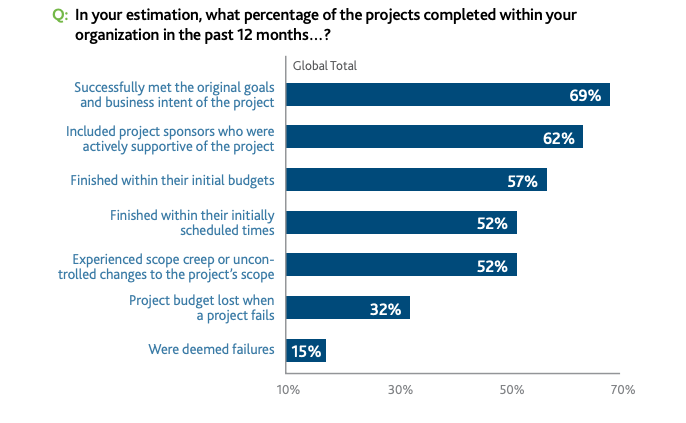
The survey's respondents said roughly 43% of their completed projects did not stay within their original budget and 48% missed the initial deadline. To keep projects from going rogue, you’ve got to get a lot of things right.
Don't freak out and think every project is doomed. You have to stay updated and learn from others to better manage your projects in the future and keep them within budget.
To help new and experienced PMs, we've put together a list of 10 project management best practices you have to know to succeed. No matter where you are in your project, find the best practices you need to successfully launch.
Ready to get started? Let’s dive in.
Project Management Best Practices
1. Build your business case for the project
Every project starts as a simple idea. But to take it from a simple thought to an active campaign, the project needs to be completely detailed and specified before you start asking for resources.
If you want to fast-track your project, take a step back and organize your thoughts into one space. Think about the various project requirements, resources, potential hurdles, and workflows needed to get across the finish line.
Whether it's time, a budget, or people, projects demand a lot of resources. Look at your business objectives as well as your long- and short-range goals to understand how this specific project fits into the bigger picture.
This will help you uncover whether or not your team or organization has the available resources to complete it in the first place. We're not trying to be downers to your new ideas. Instead, it's essential to prepare for the numerous questions around your project about to come your way.
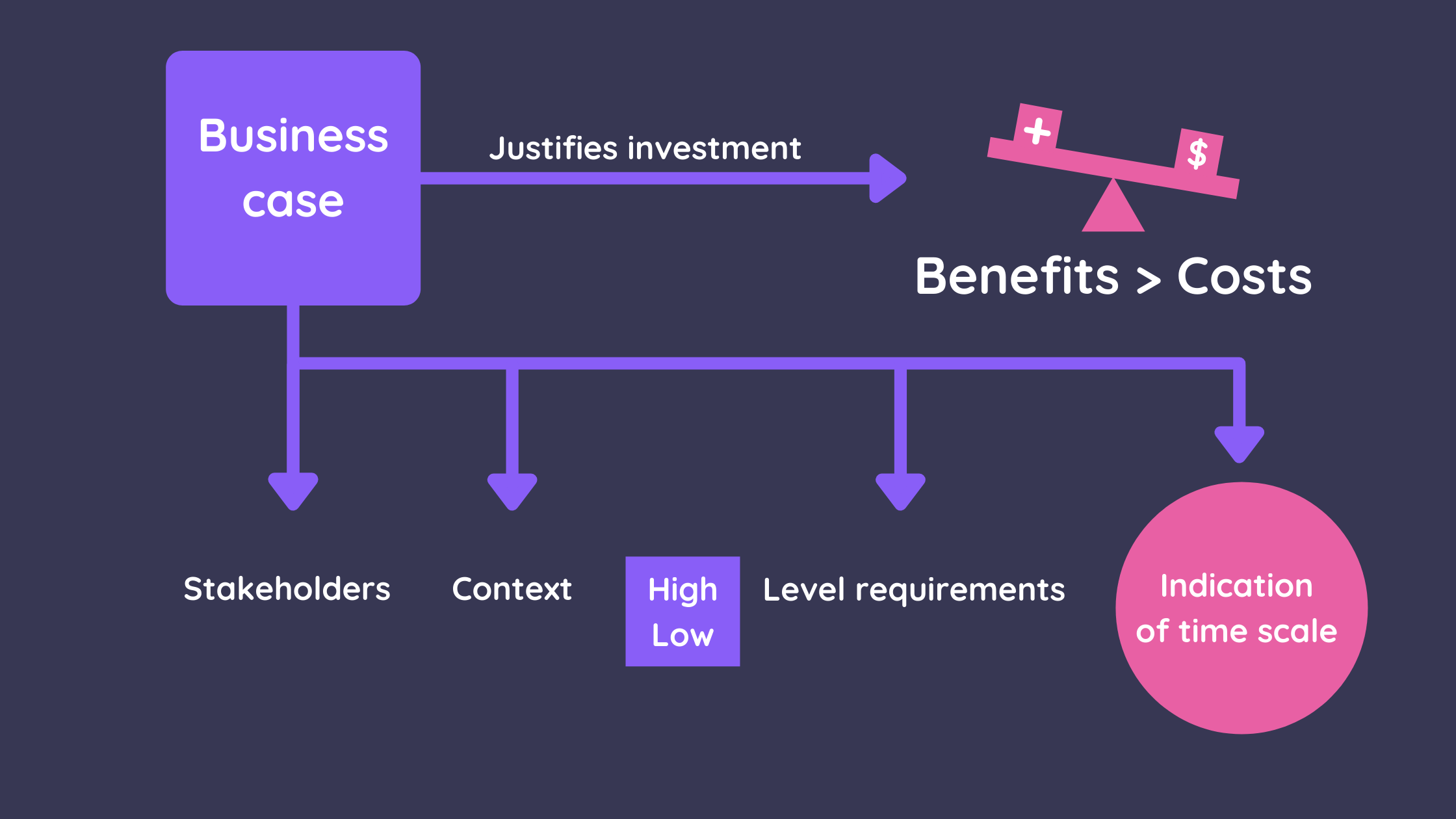
The Association for Project Management recommends every business case should successfully answer questions around the project's strategic context, potential ROI, risks and rewards, and having the budget and resources to complete it.
Following this business case plan will only guide you toward a more detailed project timeline that everyone will understand.
2. Develop a project brief
One of the most important project management best practices to know is creating a project brief, also known as a project charter. It’s a short, concise document that gives a 30,000-foot overview of the project and its scope.
Your project brief should define the “true north” of your project.
Use it to quickly get approvals and everyone's buy-in. However, you have to revisit the project brief throughout the project to keep everyone on the same page. It doesn’t need to be a long and tedious document.
On the other hand, your project brief should be easy to digest and at a minimum include:
Name of project
Client
Project overview
SMART objectives: Specific, Measurable, Acceptable, Realistic, Time-based
Scope
Deliverables
Milestones
Success metrics
Budget, timeline, resources
Now that you've got all the essentials for your project brief, you're ready to add everything into your team management software. To make things easier, Teamwork.com has a ready-to-use project plan template that takes minutes for you to set up, not days.
Get started today with our free template and save time adding your requirements, objectives, budget, and milestones into Teamwork.com.

Comprehensive project planning software to see the big picture
Break down your projects into workable and acheivable portions with project planning software from Teamwork.com.
3. Create a project plan
Before we get started, it’s super important to know that a project plan is not the same as a project brief.
Your project brief should be, well, brief. It needs to be a high-level look at what you want to accomplish.
On the other hand, a project plan explains exactly how you will complete everything in the project. This should be a more detailed outline of how you'll manage the project, the process for your team to meet objectives, and how you'll reach the finish line.
Here’s some of what a good project plan includes:
Scope and mission
Scheduling
Budgeting
Personnel
Evaluation and control
Risk assessment
Quality standards
Tracking and variance analysis
Escalation and issue management
Work authorization and change control
When developing your project plan, be mindful of the workload of team members. Your project can lose valuable momentum if bottlenecks develop.
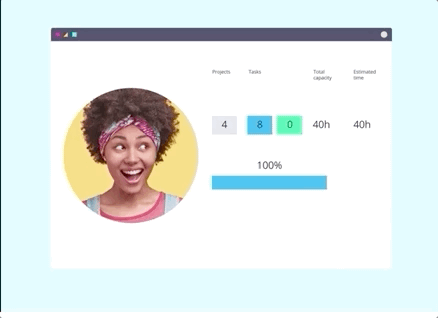
Project plans involve a lot of moving parts, but it's essential to manage or respect team workloads when you're planning. Once your plan is finalized, ensure you have the right tools to spot bottlenecks, manage workloads, and monitor the overall project's progress.
Don't forget to track or log time for your projects before you start to create more accountability for your team. This is especially true if you're working with clients who will want to know exactly what's going into your project plan.
4. Establish clear and consistent communication
Regular communication is a foundational best practice for successful project managers. Whether it's your internal team, stakeholders, or your clients, communication has to work as a two-way street.
The Teamwork.com guide 5 tips for fostering collaboration with your clients explains the power of communication the best:
The second there’s a snag in the line of communication, mismatched expectations, or lost feedback between your agency and your clients, trust takes a hit and collaboration becomes a mountainous climb.
And for your internal communications, make sure you keep everything in one centralized space. This limits the confusion of where to go to get information, handoff documents, or get updates on the overall progress.
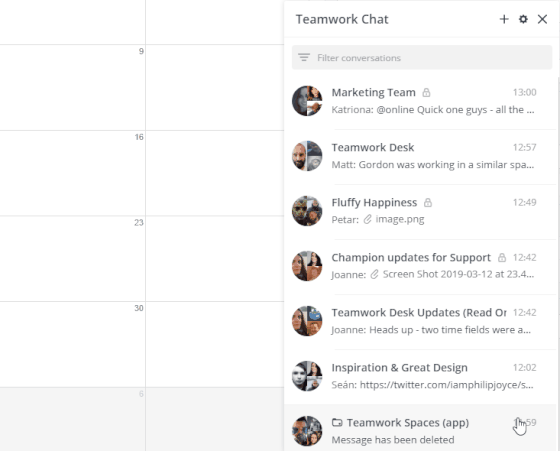
Instant messaging chat software makes life a lot easier when creating project spaces. This is especially true when you can integrate it into your project management software.
Having access to direct chat or video chat, with one member or your whole team, makes for faster problem solving and decision making. Whatever platform you use, it's important to establish and maintain clear communication channels for all stakeholders to stay informed.
And when it comes to camaraderie and a shared sense of purpose, there’s no substitute for face-to-face communications – even if those faces might be a little pixelated for the foreseeable future. Set up regular project meetings (in person or via video calls) to review progress, boost transparency, and enhance accountability.
5. Maintain a schedule and cadence
This project management best practice is as much about taking care of your team as it is about hitting your deadlines. Your goal is to avoid overloading your team’s workload while still making consistent progress.
Set a schedule that’s realistic and achievable—and can get the project done on time.
To do that, work backward from the estimated completion date to create your project schedule. What are the milestones you need to achieve? What tasks? When do they each need to be completed to avoid delays?
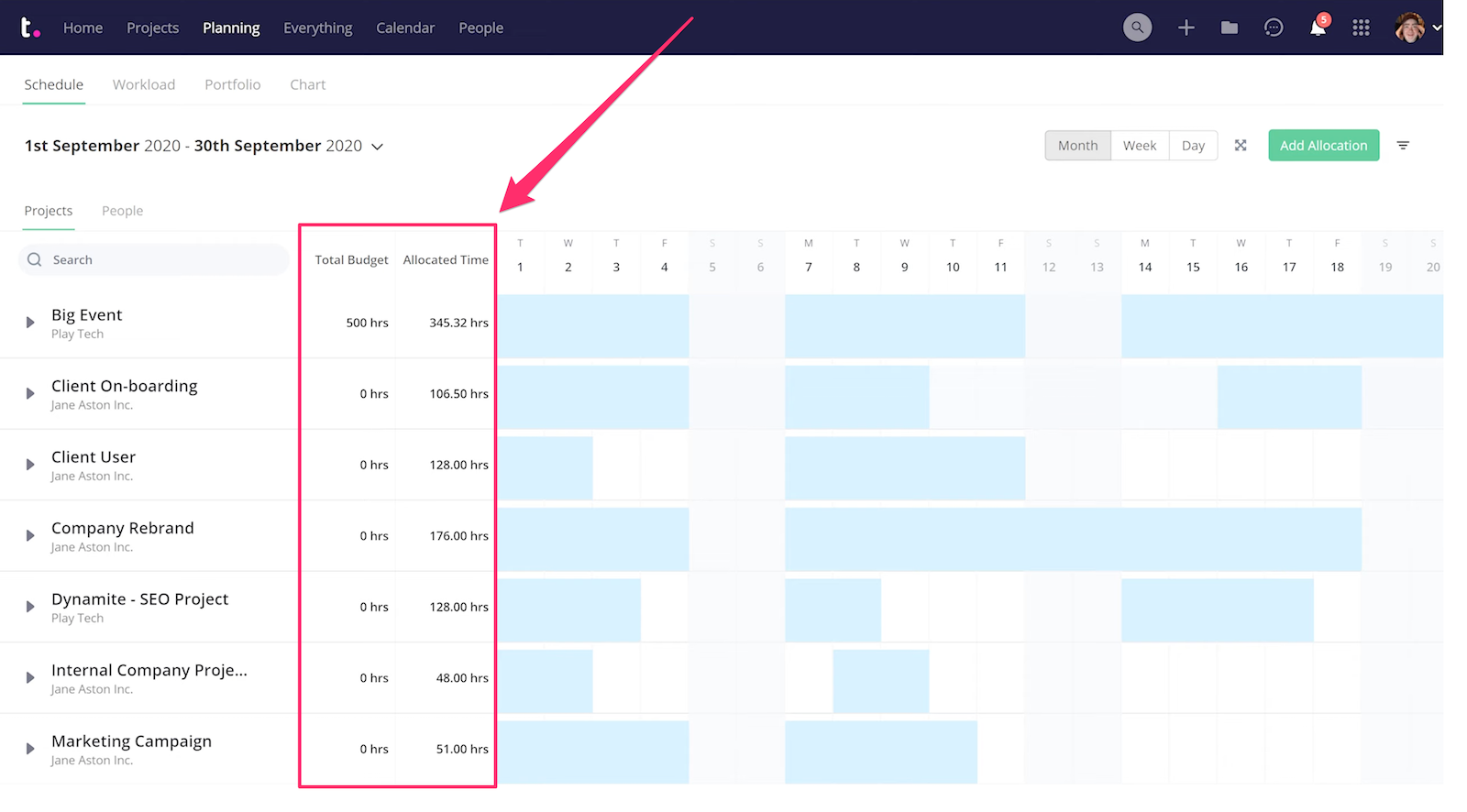
Be careful, here. Don’t just look at dates on the calendar. Look at your team’s availability, budget, and resource requirements.
Your initial schedule will be based on assumptions, past experience, and estimations. That's okay. But using a tool like Teamwork.com's Project Schedule View gives you the insight to make better scheduling decisions.
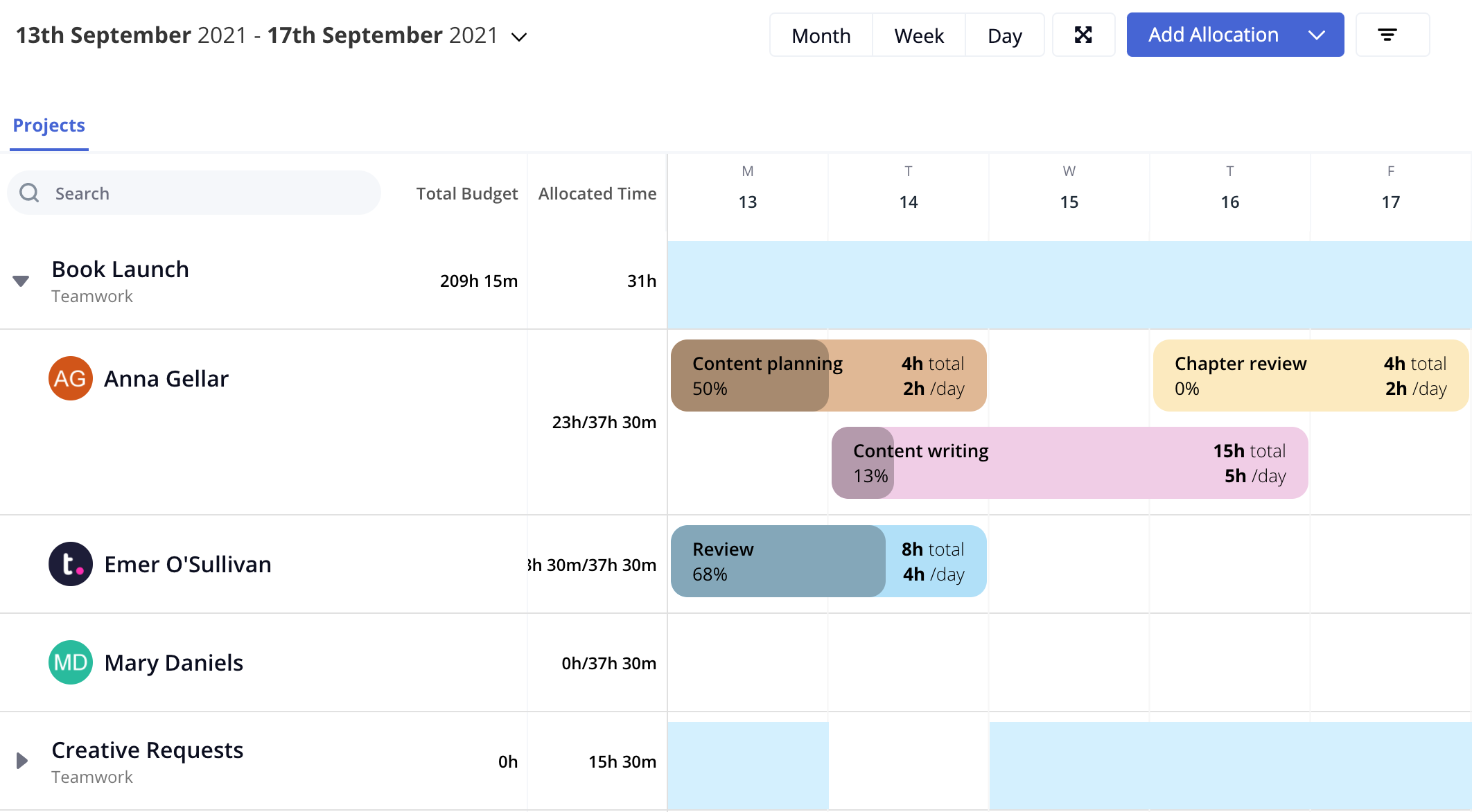
Teamwork.com makes it simple to get an overview of each individual's allocated workload. There you can see allocated hours, budgets, and task details or milestones to get a better understanding of what your team can handle.
6. Plan for setbacks and how to take corrective action
It's important to know some of the biggest reasons why projects fail are due to unexpected changes.
The same PMI survey mentioned earlier found the top three reasons projects failed were due to changes in the company's priorities (39%), the project's goals (37%), or the initial project requests (35%).
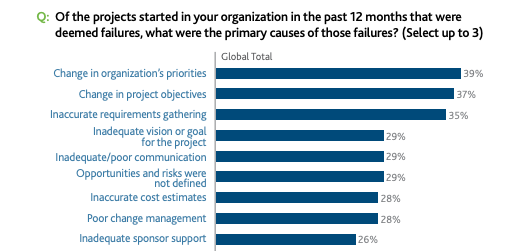
Any project manager can tell you that even the best-planned projects will inevitably have an issue. Whether it requires you to readjust timelines, budgets, or task management, you need a plan to tackle the problems directly.
One way to prepare yourself is by tracking the variances within the team. This will help your team understand why a project might not be going to plan and allow you to prevent any reoccurring issues from happening again.
For example, if your project is on pace to go over budget, you may need to review the project scope. But some projects might take longer than anticipated, which means you should consider reallocating resources or updating your delivery timeline.
Failing to take early and decisive actions to address the variances of issues is often the reason why projects change too much and ultimately fail.
7. Closely monitor your project for scope creep
One of the most common risks to consider in project management is scope creep. Essentially, scope creep is when a project's requirements or tasks are changed so much that it puts the project at risk for not finishing by the planned deadline or within the determined budget.
Your project can have clear boundaries at the start, but those boundaries become quite fluid once you get into the execution phase. Before you know it, the project's scope has expanded.
Make sure clients and stakeholders understand the implications of making changes. And if the scope must change, then update the plan and let everyone know.
Scope creep is easier to manage than many think. Features like Teamwork.com's Project Chart View provide a Gantt-style window into your projects, highlighting any milestones on the project timeline.
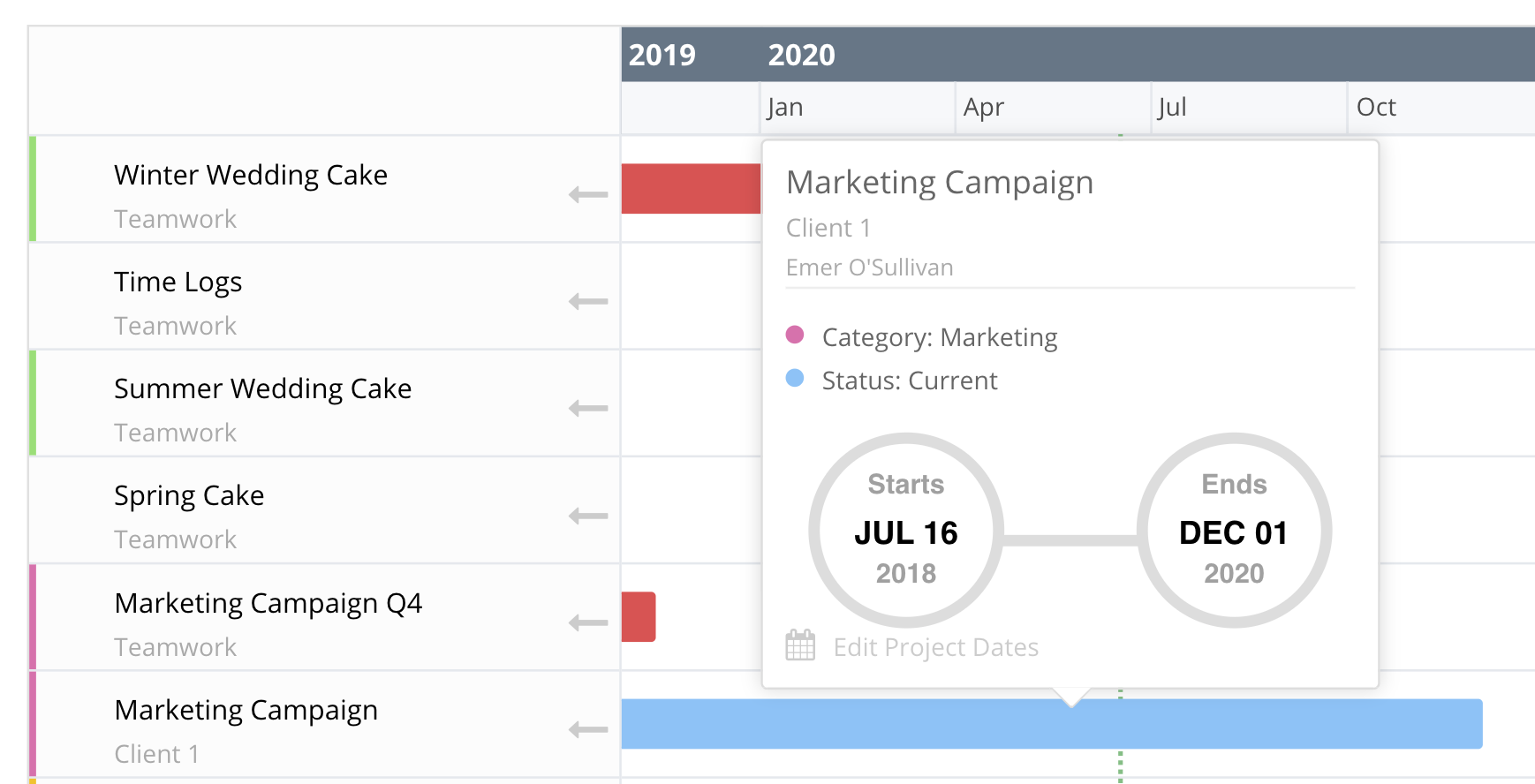
If you're looking for some simple ways to prevent scope creep, try using our project scope template for your next project. This template is a great way to plan your resources, track the progress, and work efficiently toward preventable scope creep.
8. Track everything related to the project
People aren’t the only resource you need to manage. To keep the project on track, you also need to:
Track KPIs
Manage variances and take corrective action
Focus on quality assurance
Manage risk
Check scope creep
This is quite possibly the No. 1 project management best practice you need to follow.
By keeping a close eye on your data, risk levels, quality, expenses, and other information – and by minimizing variances from your initial estimates – you’ll be able to take care of issues before they get out of hand.
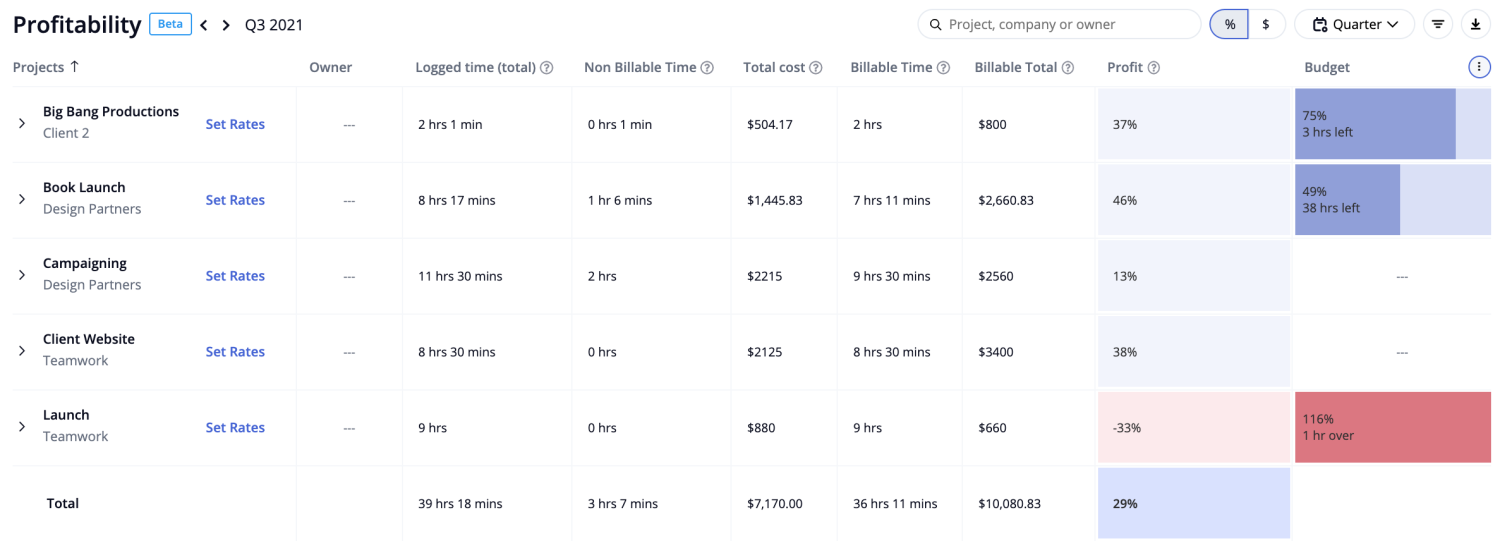
Teamwork.com's suite of reporting features allows project managers to do just that. Easily manage your KPIs associated with the profitability of each project in the Teamwork.com Profitability Report.
Or use Teamwork.com to generate a Project Report (downloadable in a PDF form) to measure KPIs around project milestones, task lists, tasks, subtasks, project updates, and project health.
9. Keep project documents up to date
As a project manager, it’s easy to put off housekeeping tasks and focus instead on putting out fires. But you need to keep your project documents updated throughout the project.
This best practice will save you a ton of time (as long as you consistently update your essential project documents). As long as you stay on top of your documents, project closure will be a breeze.
Put them off, and you’ll have to try to recall everything and update your documents all at once when you should be focused on closing the project. In particular, keep these documents updated on a regular basis:
RACI matrix (listing who’s Responsible, Accountable, Consulted, Informed for each task)
Risks and issues log
Change requests
Project schedule
Project expenses
Retrospective log
When you’re ready to close the project, you only need to review these documents to be sure there aren’t any outstanding issues. If you need a centralized space for all of your process documents, look no further than Teamwork Spaces.
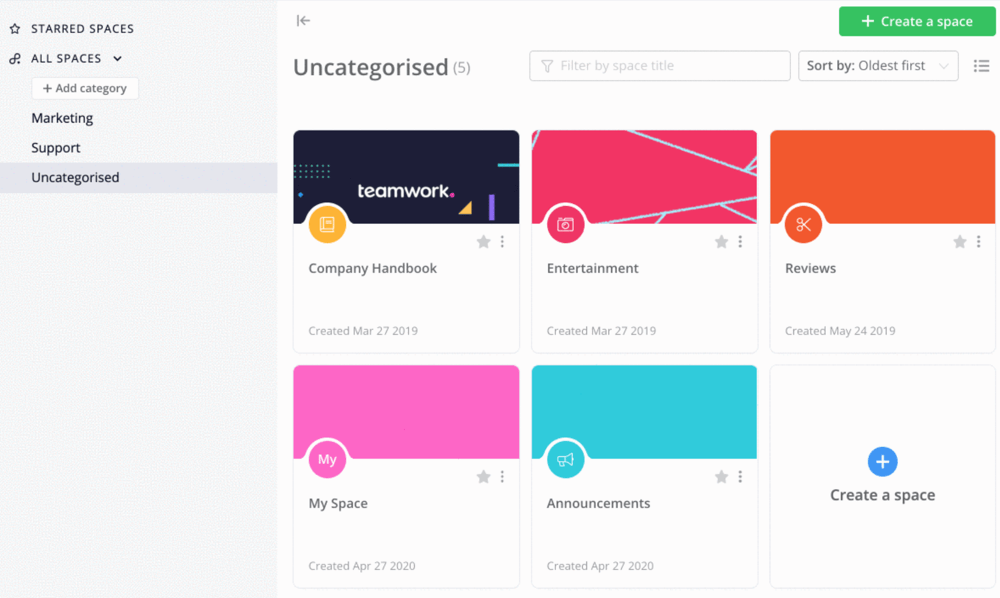
The Spaces solution acts as a centralized hub for all of your individual team's processes and documents. Stay organized and easily integrate with Teamwork.com to connect everything together.
10. Hold a retrospective meeting for more insights
Project management is about getting a project done as efficiently and effectively as possible. And no matter how good you are now, you can always get better.
That’s why at the end of every project you need to hold a retrospective meeting. Even though retros are more common in the Scrum method, which is typically used by developers or designers working in sprints, these meetings work well for all sorts of projects.
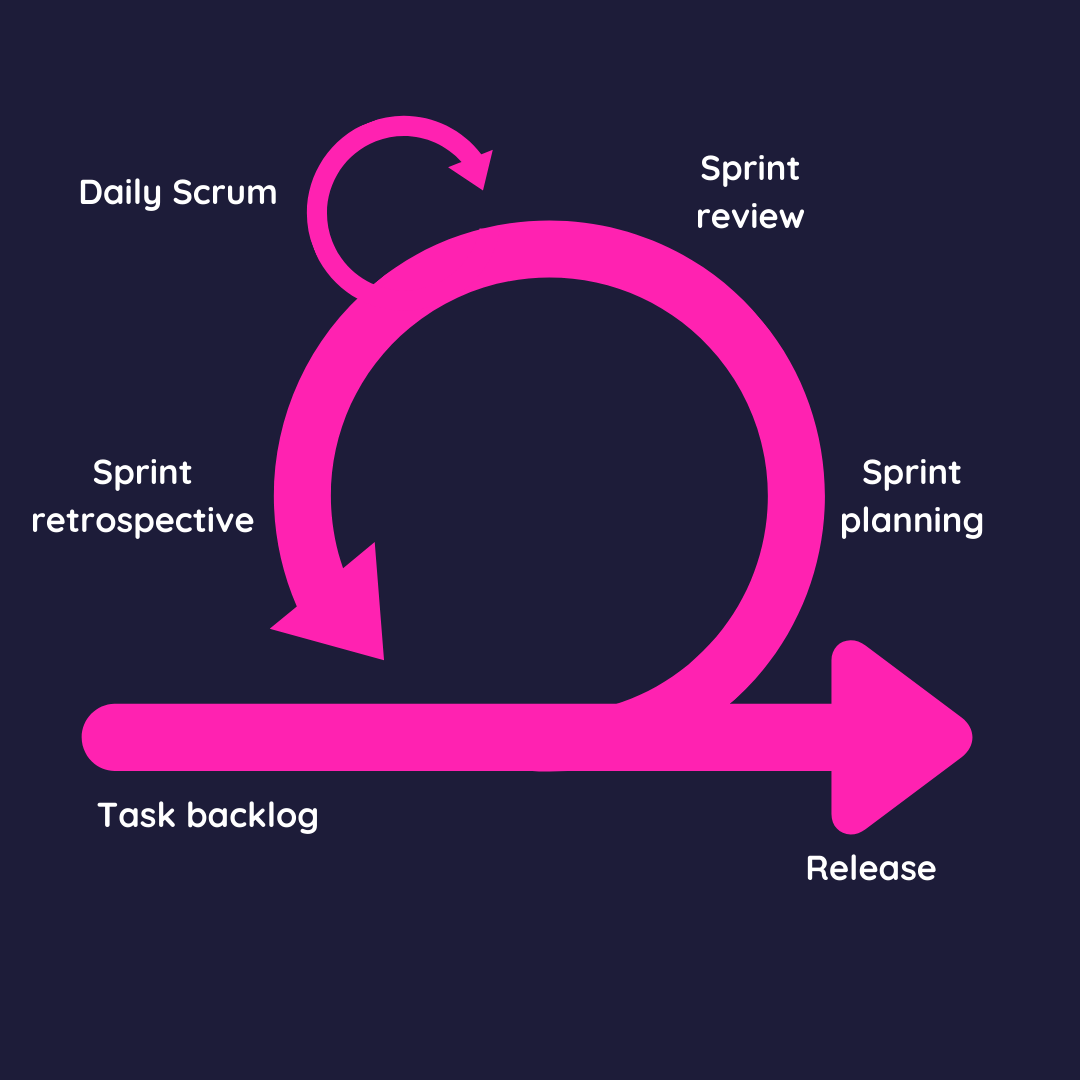
Like the kickoff meeting, your retro is for everyone who participated in the project: team members, stakeholders, and support people.
The idea is to learn what worked, what didn’t, and how things can be improved on future projects. The only way to capture these key insights is to get feedback and ideas from everyone. And we mean everyone.
That’s because even if someone only had a tiny part in the project, they may have noticed an area where tasks got bogged down or fell through the cracks. Their insights, no matter how short-lived, can still help you optimize and improve for the next go around.
Of course, if the project had issues (big or small), emotions may run high. It’s your job to temper the crowd, so to speak, and treat this meeting as an opportunity to learn and grow, not cast blame.
Follow these project management best practices with the right tools
Successful project management can be quite challenging, but following these best practices will certainly help you improve. However, it's not just about the best practices to become a better project manager.
You need the right tools at your side as well.
Make sure you have everything to help you succeed with an all-in-one project management solution that goes beyond managing projects. Take Teamwork.com for a spin with a free 30-day trial. You'll quickly see why teams prefer to collaborate in Teamwork.com.

The only all-in-one platform for client work
Trusted by 20,000 businesses and 6,000 agencies, Teamwork.com lets you easily manage, track, and customize multiple complex projects. Get started with a free 30-day trial.




